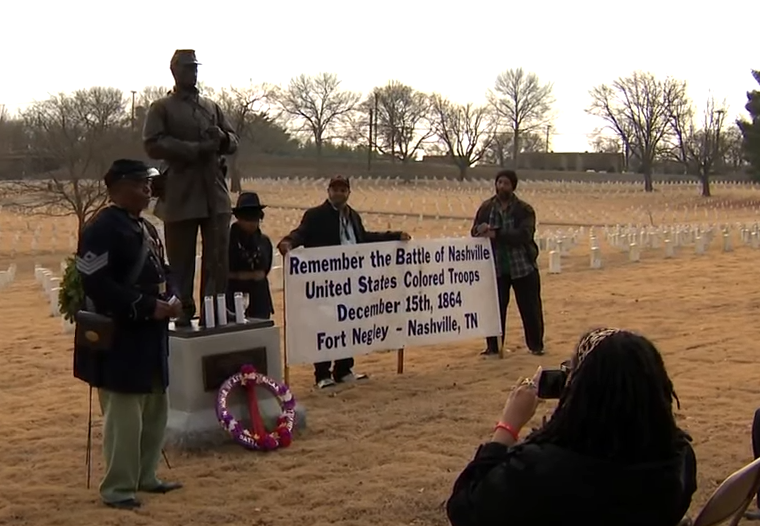Critical Race Theory erases U.S. Civil War, abolitionist movement’s successes

The much-maligned Critical Race Theory has inflamed parents, educators, politicians, and historians alike as it imposes a one-sided, partial, and incomplete view of the United States of America. Parent-driven protests, school board electoral campaigns, and interviews on cable television have placed competing views of America’s history front-and-center.
Meanwhile, the media and Critical Race Theory supporters fail to account for the theory’s many historical inaccuracies and flaws.
For example, the basis of the controversial theory is that America is systemically and institutionally racist, particularly in its courts, and schools. Thus CRT dismisses much societal progress on race relations since its founding in 1776. Advocates for Critical Race Theory embrace claims about President Donald Trump’s allegedly white supremacist sympathies but conveniently ignore the U.S. Civil War and the abolitionist movement.
The civil war was fought from 1861-1865, leading to more than 110,00 deaths of Union soldiers and a total of 624,511 deaths. By comparison, the Revolutionary War claimed more than 4,000 lives and World War I 116,516. The property damage from massive pitched battles on farmland, forests, towns, and cities could not be estimated, but could be reasonably set in millions of dollars.
By all accounts, the theory ignores the deaths and tales of heroism from the U.S. Civil War.
Sacrifices by black and white Union soldiers alike pepper federal records, such as the heroic charge of the all-black U.S. Colored 54th Massachusetts regiment at Fort Wagner, South Carolina that resulted in a 42% casualty rate (as illustrated by the movie Glory). The theory appears to dismiss the deaths of several hundred black soldiers in the savage hand-to-hand fighting at The Crater in the Siege of Petersburg, Virginia, where U.S. Colored Troops were slaughtered by Confederates even after attempting to surrender. There is also the last-ditch charge by the 1st Minnesota Regiment at Gettysburg, Pennsylvania, which stalled a Confederate advance at the cost of 215 of its 262 soldiers dead, wounded, or captured. The famed Irish Brigade nearly broke Confederate lines in an almost impossible, uphill charge in Fredericksburg, Virginia and lost 45% of its Irish-born soldiers who signed up to defend their adopted land.
Also, the U.S. federal government awarded 1,210 Medals of Honor for exemplary and above-beyond actions by Union soldiers in the course of the war. Many of the war dead left behind families and devastated their local communities, where many Union units comprised a good number of working-age men in the area.
The U.S. Civil War is riddled with heroic military actions, by white and black Union soldiers, which appear to be swept under the rug by Critical Race Theory advocates.
Neither did the theory address how the mostly-white Christian abolitionist movement pushed for outlawing slavery. Indeed Harriet Beecher Stowe’s much maligned book Uncle Tom’s Cabin satirized slaveowners and sympathized with black slaves, while stirring up abolitionist fervor in the Northern states. Another example is abolitionist firebrand John Brown, who attempted to start a slave rebellion by seizing a federal armory in modern West Virginia at Harper’s Ferry and ultimately failed. He was hanged for his actions and abolitionists dedicated a song to his martyrdom called “John Brown’s Body.”
Even though the Union victory in 1865 ended the nascent Confederacy, led to the abolition of the practice of slavery in the South, installed federal troops to protect freed black Americans at polling places, and reunified the country, Critical Race Theory all but forgets the country’s achievement in defeating a formidable pro-slavery rebellion.
At the dedication of a national cemetery in Gettysburg, Pennsylvania, President Abraham Lincoln closed his Gettysburg Address with the following:
It is rather for us to be here dedicated to the great task remaining before us — that from these honored dead we take increased devotion to that cause for which they gave the last full measure of devotion — that we here highly resolve that these dead shall not have died in vain — that this nation, under God, shall have a new birth of freedom — and that government of the people, by the people, for the people, shall not perish from the earth.
Critical Race Theory supporters should take note from President Lincoln, and the many graves in cemeteries in Gettysburg, Arlington National Cemetery, and across the country, and properly re-learn U.S. history. America is not built on racism or slavery, but progress and achievement for all.




